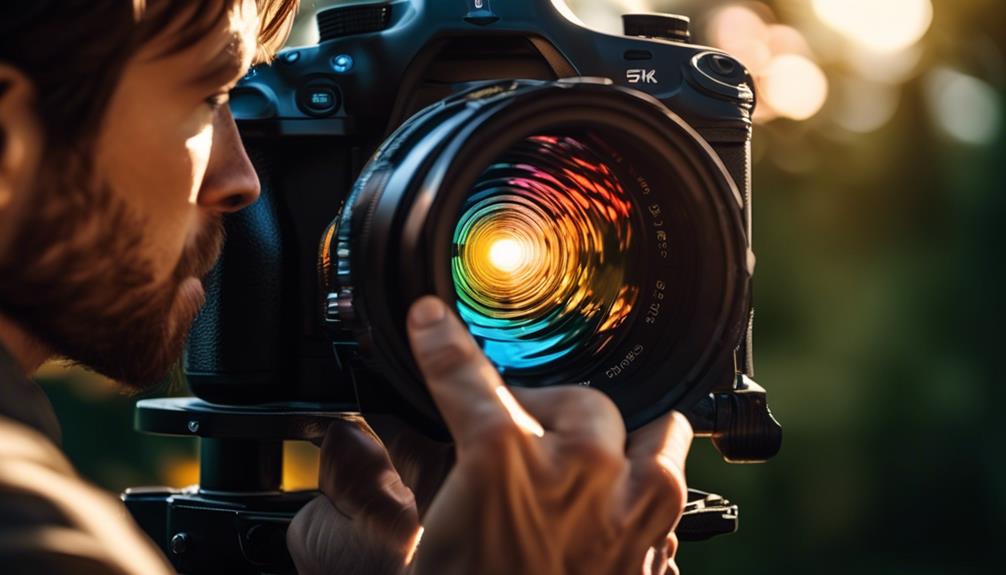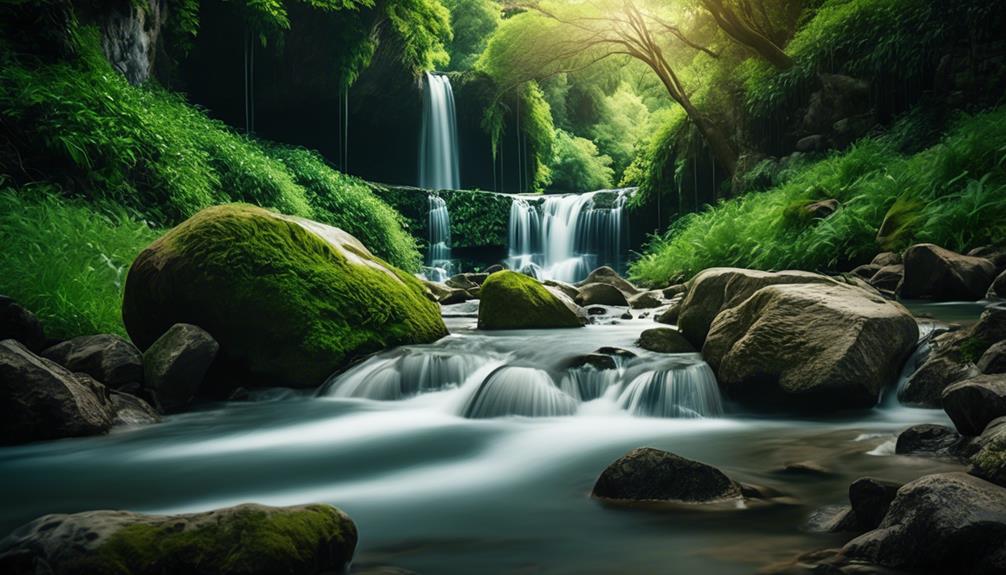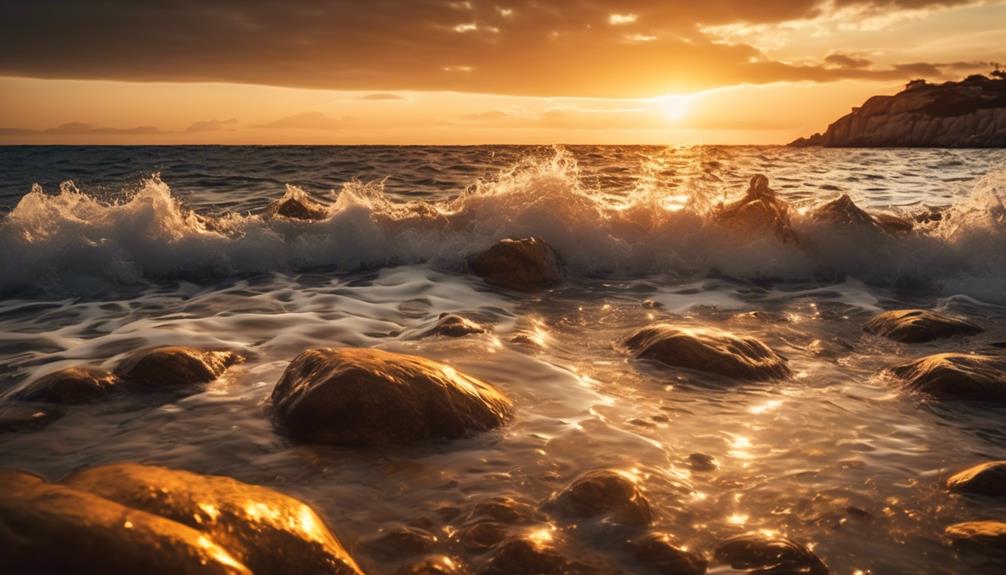Please note this post may contain affiliate links picked by me (Jay) that I have deemed may be of interest or relevant to you the reader of this.
These links do not affect the cost of the thing if you decide to purchase but i may get a little money if you choose to purchase.
For more information on my affiliate link policy click here.
Like a painter's brush stroke adds depth and dimension to a canvas, the use of ND filters in photography has the power to transform ordinary scenes into extraordinary works of art.
As a passionate photographer, I have always sought to push the limits of my craft and explore new techniques that can unlock the true potential of my images.
In this discussion, I will take you on a journey through the world of ND filter techniques, revealing the secrets behind capturing stunning long exposures, achieving perfect exposure balance, and even creating unique and mesmerizing creative effects.
So, get ready to embark on an adventure that will forever change the way you see and capture the world through your lens.
Key Takeaways
- ND filters are essential for photographers to have more control over exposure and depth of field.
- Choosing the right ND filter involves considering the level of light reduction needed, filter size, and additional features like a polarizing filter.
- ND filters allow for longer exposure times, capturing movement and creating creative effects like silky water and light trails.
- ND filters can balance exposure, particularly with graduated ND filters, and enhance the overall quality of photographs.
Understanding ND Filters
Understanding ND filters is essential for photographers who want to take their skills to the next level and capture stunning images in a variety of lighting conditions. As an avid photographer myself, I can't stress enough how much of a game-changer ND filters can be. These little pieces of glass hold the key to unlocking a whole new world of creative possibilities.
So, what's the science behind ND filters? Well, ND stands for Neutral Density, and these filters work by reducing the amount of light that enters the camera lens. They do this by evenly attenuating the entire visible spectrum of light. This allows photographers to achieve longer exposure times or wider apertures without overexposing the image. In simpler terms, ND filters help us control the amount of light that ends up hitting the camera's sensor, giving us more control over exposure and depth of field.
When it comes to landscape photography, ND filters are an absolute must-have. They allow us to capture the beauty of nature in all its glory, even in the harshest lighting conditions. By using ND filters, we can achieve that smooth, dreamy effect on waterfalls, rivers, and oceans, making them appear as if they were flowing effortlessly. Additionally, ND filters help us balance the exposure between the sky and the foreground, preventing blown-out highlights or underexposed shadows.
Choosing the Right ND Filter
When it comes to selecting the perfect ND filter, there are a few key factors to consider that will ensure you achieve the desired results in your photography.
- Determine the level of light reduction needed: ND filters come in different levels of light reduction, indicated by their filter factor. For landscape photography, a neutral density filter with a filter factor of around 6 to 10 is often ideal. This allows for long exposure shots that capture the movement of clouds or water, creating a dramatic effect.
- Consider the filter size: ND filters come in various sizes, ranging from round screw-on filters to square filters that require a filter holder system. Determine the filter size that fits your camera lens or filter holder system to ensure compatibility and ease of use.
- Decide on additional filter features: Some ND filters have additional features, such as a polarizing filter. This type of filter not only reduces the amount of light entering the lens, but also helps to reduce glare and increase color saturation. If you often shoot landscapes with water or reflective surfaces, a polarizing filter can be a valuable addition to your kit.
Using ND Filters for Long Exposures
To capture stunning long exposure shots, incorporating ND filters into your photography arsenal is essential. These filters allow you to control the amount of light entering your camera, enabling you to achieve longer exposure times even in bright conditions. This opens up a whole new world of creative possibilities, especially when it comes to nighttime photography and capturing motion.
When using ND filters for long exposures, it's important to understand how they affect your images. The table below summarizes the main benefits and considerations of using ND filters in this context:
| Benefits | Considerations |
|---|---|
| Extends exposure time | Requires the use of a tripod |
| Creates smooth, silky water and clouds | May introduce color casts or loss of sharpness |
| Eliminates distractions in crowded scenes | Requires careful exposure calculation |
| Allows for creative light painting | Can result in overexposure if not used correctly |
By extending the exposure time, ND filters give you the ability to capture the movement of subjects in a way that would be impossible with shorter exposures. This is particularly useful for photographing flowing water, where you can transform a busy river into a serene and ethereal scene. Additionally, by eliminating distractions in crowded scenes, ND filters allow you to focus on your main subject and create a more impactful composition.
However, it's important to keep in mind the potential drawbacks of using ND filters. They can introduce color casts or loss of sharpness, so it's crucial to choose high-quality filters and perform white balance adjustments if necessary. Additionally, calculating the correct exposure can be challenging, as the filter's density affects the overall exposure settings. It's recommended to use a light meter or the camera's built-in metering system to ensure accurate results.
Balancing Exposure With ND Filters
One key aspect to master when working with ND filters is finding the right balance in exposure. This can be achieved through various techniques and strategies. Here are three essential methods to help you achieve a well-balanced exposure with ND filters:
- ND Filter Stacking: This technique involves using multiple ND filters to achieve the desired level of light reduction. By stacking filters of different strengths, you can effectively control the amount of light entering the camera. This allows you to capture scenes with a wide dynamic range, ensuring both highlights and shadows are properly exposed.
- Graduated ND Filters: These filters are particularly useful when dealing with scenes that have a stark contrast between the sky and the foreground. Graduated ND filters are darker at the top and gradually become lighter towards the bottom. By positioning the filter in such a way that the darker portion covers the sky, you can balance the exposure between the sky and the rest of the scene, resulting in a more evenly exposed photograph.
- Using ND Filters for Video Shooting: ND filters aren't only beneficial for still photography but also for videography. When shooting video, it's crucial to maintain a consistent shutter speed to achieve smooth motion. However, in bright conditions, this can be challenging without overexposing the footage. By using ND filters, you can reduce the amount of light entering the camera and maintain the desired shutter speed, resulting in high-quality, well-exposed videos.
Mastering the art of balancing exposure with ND filters opens up endless creative possibilities for capturing stunning photographs and videos. Whether you're using ND filter stacking, graduated ND filters, or incorporating them into your video shooting, these techniques will help you achieve the perfect balance in exposure and unlock the full potential of your photography.
Creative Effects With ND Filters
Now that we've explored the techniques for balancing exposure with ND filters, let's dive into the world of creative effects that can be achieved with these versatile tools.
As a photographer, I'm always looking for innovative ways to capture breathtaking landscapes. ND filters allow me to push the boundaries of my creativity and produce stunning images that stand out from the crowd.
One of the most captivating effects that can be achieved with ND filters is the dreamy water effect. By using a long exposure and a strong ND filter, you can transform a rushing river or crashing waves into a silky smooth surface. The motion blur created by the filter gives the water a surreal and ethereal quality, making it appear like a dream. This effect adds a sense of tranquility and serenity to your photographs, creating a captivating visual experience for your audience.
To achieve this effect, start by setting up your camera on a tripod to ensure stability. Then, attach a strong ND filter, such as a 10-stop or even a 15-stop filter, to significantly reduce the amount of light entering the lens.
Next, set your camera to a low ISO and a small aperture, usually between f/8 and f/16, to increase the exposure time. Finally, use a remote shutter release or the camera's built-in timer to prevent any camera shake when pressing the shutter button.
Frequently Asked Questions
How Do I Clean aND Maintain My ND Filters to Ensure Optimal Performance?
To ensure optimal performance of my ND filters, I follow a few maintenance tips.
Cleaning techniques for ND filters are essential in maintaining their effectiveness. I start by gently blowing off any loose particles with a bulb blower.
Then, using a microfiber cloth, I carefully wipe away smudges or fingerprints. For stubborn dirt or smears, I use a lens cleaning solution, applying it to the cloth first and then gently wiping the filter.
Regularly cleaning and maintaining my ND filters ensures that my photography remains top-notch.
Can I Stack Multiple ND Filters Together for Even More Light Reduction?
Yes, you can definitely stack multiple ND filters together to achieve even more light reduction. This technique allows you to have greater control over exposure in bright lighting conditions and opens up creative possibilities.
However, it's important to note that stacking too many filters can lead to a loss of image quality and potential vignetting.
What Are the Differences Between Square aND Circular ND Filters, aND Which One Should I Choose?
When deciding between square and circular ND filters, it's important to consider the pros and cons.
Square filters offer more flexibility in terms of size and compatibility with different lenses, while circular filters are easier to use and more convenient for quick adjustments.
The right choice depends on your shooting style and needs.
To capture the best photos in various lighting conditions, it's crucial to choose the right ND filter, whether it's square or circular.
Are There Any Specific Camera Settings I Should Use When Shooting With an ND Filter?
When shooting with an ND filter, it's essential to adjust your camera settings for the best results. You want to make sure you're capturing the right amount of light while maintaining the desired exposure.
Experiment with different shooting techniques like long exposures or capturing motion blur.
As for the camera settings, try using a low ISO, smaller aperture, and slower shutter speed. These adjustments will help you unlock the full potential of your ND filter and capture stunning, innovative photos.
Can I Use ND Filters for Video Recording, or Are They Only Suitable for Still Photography?
Yes, you can definitely use ND filters for video recording! They aren't just limited to still photography.
ND filters are incredibly useful for controlling the amount of light that enters your camera, which is crucial for achieving the right exposure in videos as well.
However, there are some advantages and disadvantages compared to still photography. While ND filters can help you create smooth and cinematic motion blur in videos, they can also introduce color shifts or vignetting.
Conclusion
In conclusion, ND filters are a game-changer for photographers looking to unlock their full creative potential. They allow for stunning long exposures, perfect exposure balancing, and the ability to create unique and captivating effects.
With the right ND filter and techniques, your photography will reach new heights, capturing moments in a way that will make your audience's jaws drop.
So go ahead, grab an ND filter and watch your photography soar to breathtaking heights!


